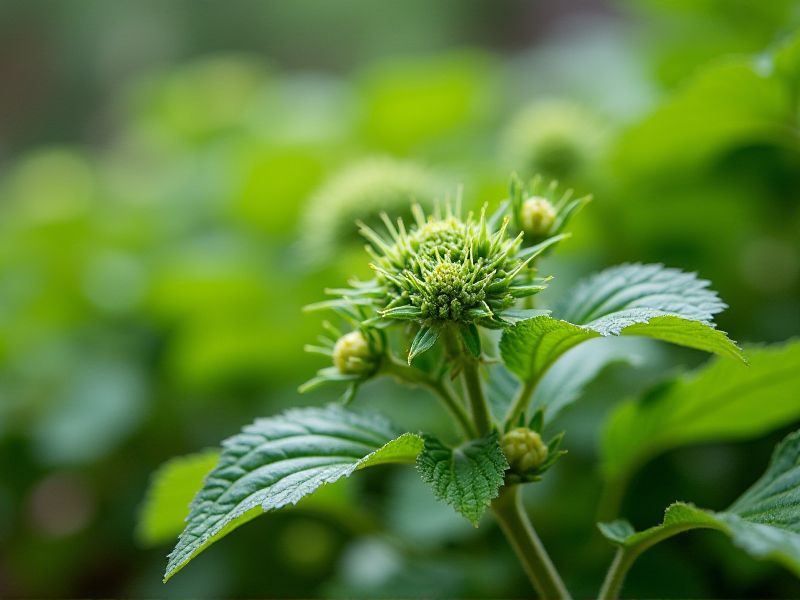
Herbs such as basil, rosemary, and mint thrive in home gardens, offering fresh flavors for culinary creations. Leafy greens like spinach, kale, and lettuce are ideal for small spaces and can be harvested multiple times. Tomatoes, known for their versatility, flourish in pots or containers, producing sweet, juicy fruit throughout the growing season. Peppers, including bell and chili varieties, provide a colorful addition to your garden and a spicy kick to meals. Radishes grow quickly and require minimal maintenance, making them a perfect choice for beginners eager to cultivate their own food.
List of some Edible plants that can be grown at home
- Spinach (Spinacia oleracea)
- Tomato (Solanum lycopersicum)
- Basil (Ocimum basilicum)
- Lettuce (Lactuca sativa)
- Carrot (Daucus carota subsp. sativus)
- Radish (Raphanus sativus)
- Mint (Mentha)
- Chives (Allium schoenoprasum)
- Peppers (Capsicum)
- Strawberries (Fragaria × ananassa)
Important things about Edible plants that can be grown at home
Nutritional Benefits
Growing edible plants at home offers a plethora of nutritional benefits, contributing to a healthier lifestyle. Many herbs such as basil, cilantro, and parsley are rich in vitamins and antioxidants, enhancing your dishes while boosting immune health. Leafy greens like spinach and kale are packed with essential nutrients, including iron, calcium, and fiber, making them a powerhouse for overall well-being. By cultivating these plants in your garden or on your balcony, you not only gain fresh ingredients for your meals but also promote sustainable living and self-sufficiency.
Soil Requirements
Edible plants thrive in well-drained, nutrient-rich soil, making organic compost an excellent choice to enhance soil structure and fertility. Incorporating amendments like peat moss or vermiculite can improve aeration and moisture retention, crucial for root development. pH levels between 6.0 and 7.0 are ideal for most edible plants, so you should regularly test your soil to ensure optimal growth conditions. Container gardening also offers flexibility, allowing you to customize soil mixes tailored to specific plants, such as herbs, vegetables, or fruit-bearing varieties.
Sunlight Needs
Edible plants thrive best in environments with abundant sunlight, making your home garden an ideal location. Consider growing herbs such as basil, parsley, and cilantro, which not only require full sun but also elevate the flavor of your meals. Vegetables like tomatoes, peppers, and lettuce flourish in sunny conditions, providing fresh produce right at your fingertips. Incorporating these plants into your home garden not only enhances your culinary options but also contributes to sustainable living practices.
Watering Frequency
Edible plants grown at home, such as tomatoes, basil, and spinach, require careful attention to watering frequency to thrive. Generally, these plants should be watered deeply once a week, allowing the soil to dry out slightly between waterings, which encourages healthy root development. Indoor herbs may need more frequent watering based on humidity levels and pot size; monitor their moisture preferences closely. It's crucial to adjust your watering routine according to seasonal changes, environmental conditions, and the specific water needs of each plant type to ensure optimal growth.
Pest Management
Growing edible plants at home can be an rewarding venture, enhancing both your culinary experience and pest management strategies. Consider incorporating plants like basil, mint, and marigold, known for their pest-repelling properties while also being flavorful additions to your kitchen. Companion planting, where you strategically place these herbs near vegetables like tomatoes and peppers, can help deter aphids and other common pests. Cultivating these edible plants not only enriches your diet but also fosters a sustainable garden environment that minimizes the need for chemical pesticides.
Harvesting Techniques
Effective harvesting techniques for edible plants grown at home ensure the best flavor and yield. When harvesting leafy greens such as spinach or lettuce, it's ideal to pick the outer leaves first, allowing the inner leaves to continue growing. For herbs like basil and cilantro, snipping stems just above a leaf node promotes bushier growth. Timing is crucial; most vegetables are best harvested in the morning when they are crisp and full of moisture, enhancing their taste and nutritional value.
Companion Planting
Companion planting involves strategically cultivating different edible plants together to enhance growth and deter pests. For instance, tomatoes thrive when planted with basil, as basil helps repel insects while enhancing the tomatoes' flavor. You can create a vibrant kitchen garden by pairing carrots with onions; the strong scent of onions can mask the carrots from pests. Such combinations not only optimize space but also promote a healthier ecosystem in your home garden.
Seasonal Planting
Edible plants that thrive in seasonal planting can transform your home garden into a lush source of fresh produce. In spring, consider planting easy-to-grow herbs like basil and cilantro, which enhance your culinary creations and are perfect for beginners. During the summer, tomatoes and peppers flourish, offering vibrant colors and flavors that can elevate any dish. As the cooler months approach, consider hardy greens such as kale and spinach that not only survive in lower temperatures but also provide abundant nutrients for your diet.
Propagation Methods
Edible plants can be propagated using various methods, including seeds, cuttings, and division. For example, herbs like basil and mint thrive through cuttings, allowing you to easily create new plants from existing ones. Seeds are a common choice for growing vegetables like tomatoes and peppers, offering a wider variety of flavors and nutrients. If you have perennials like chives or garlic, division is an effective method to multiply your harvest while maintaining strong plant health.
Edible Parts Of Plants
Growing edible plants at home offers a rewarding way to enhance your diet with fresh produce. Popular choices include tomatoes, which thrive in ample sunlight and well-drained soil, and basil, known for its aromatic leaves that boost culinary dishes. Leafy greens such as spinach and kale are nutrient-dense options that can be harvested multiple times, promoting continuous growth. Herbs like parsley and chives are not only easy to maintain but also add flavor to your meals while improving your home's aesthetic appeal.
